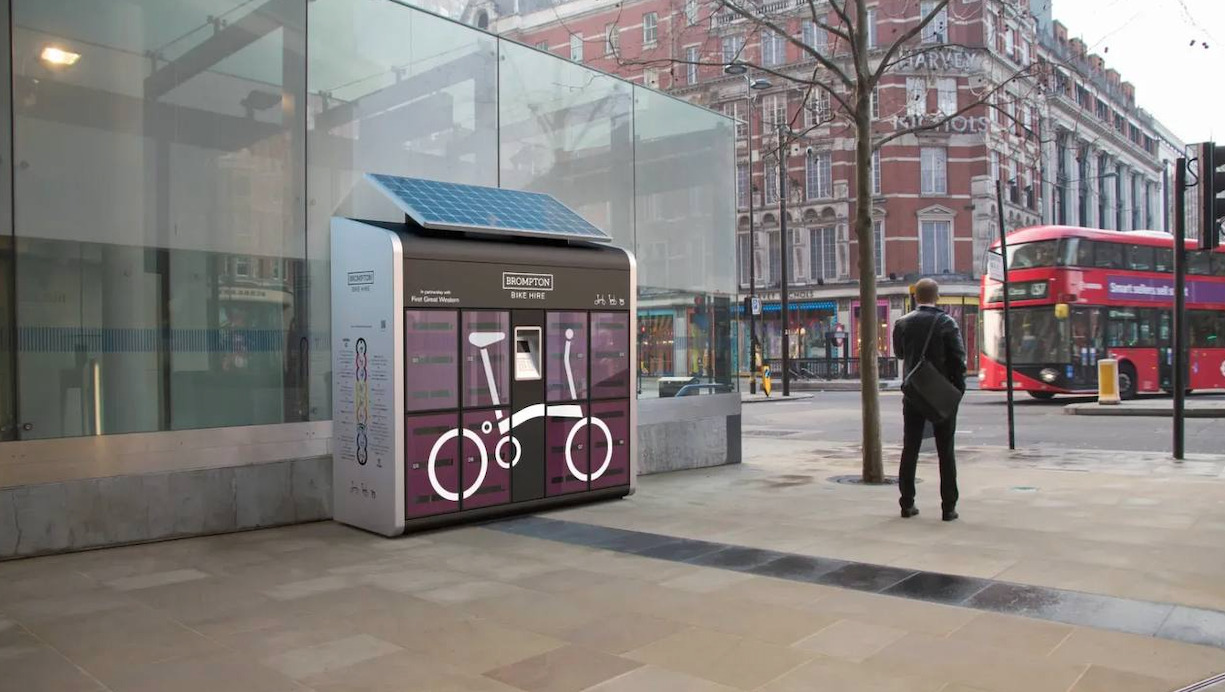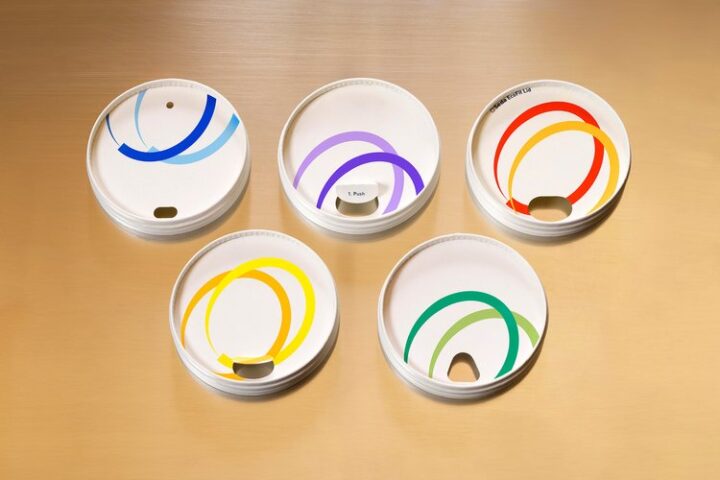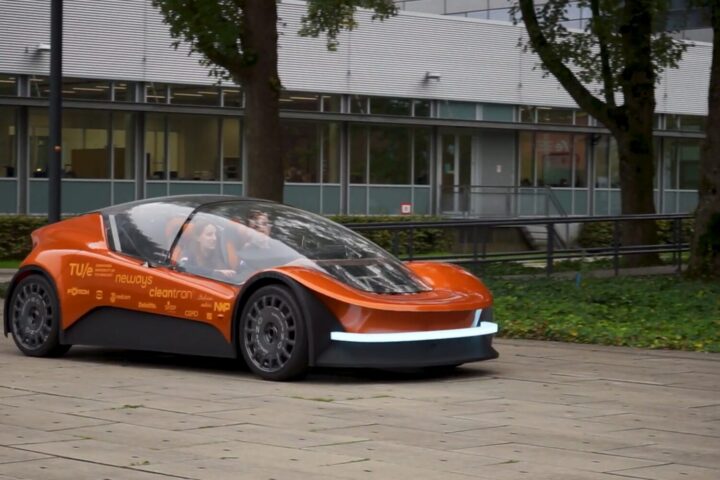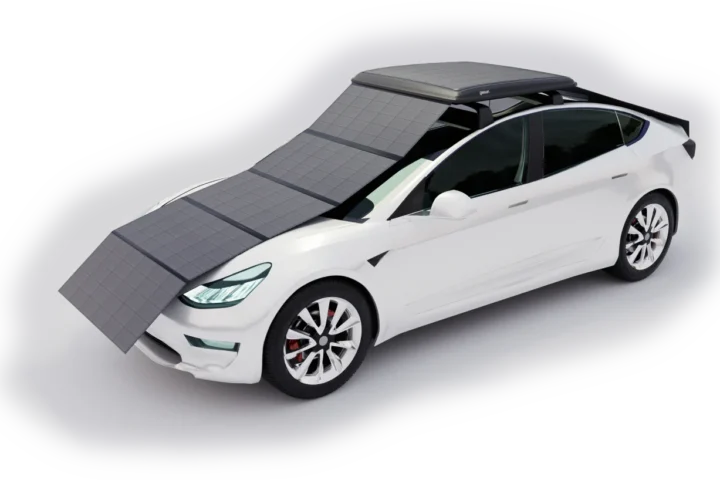Brompton Bikes have achieved a strong place in the world of urban transportation, and they don’t seem to disappear any time soon. Its compact, foldable design combines both practicality and sustainability, making them a very popular option for moving around the city. Choosing a bike over a car just once a day reduces the average person’s carbon emissions from transportation by 67%.
The global energy-related CO2 emissions grew by 1.1% in 2023, a rise that doesn’t align with the company’s environmental ethics, and the transportation system is largely to blame. Brompton Bikes wants to create a sustainable future, but how? By collaborating with the design and innovation consultancy Seymour Powell who worked closely to create rental stations for its bikes.
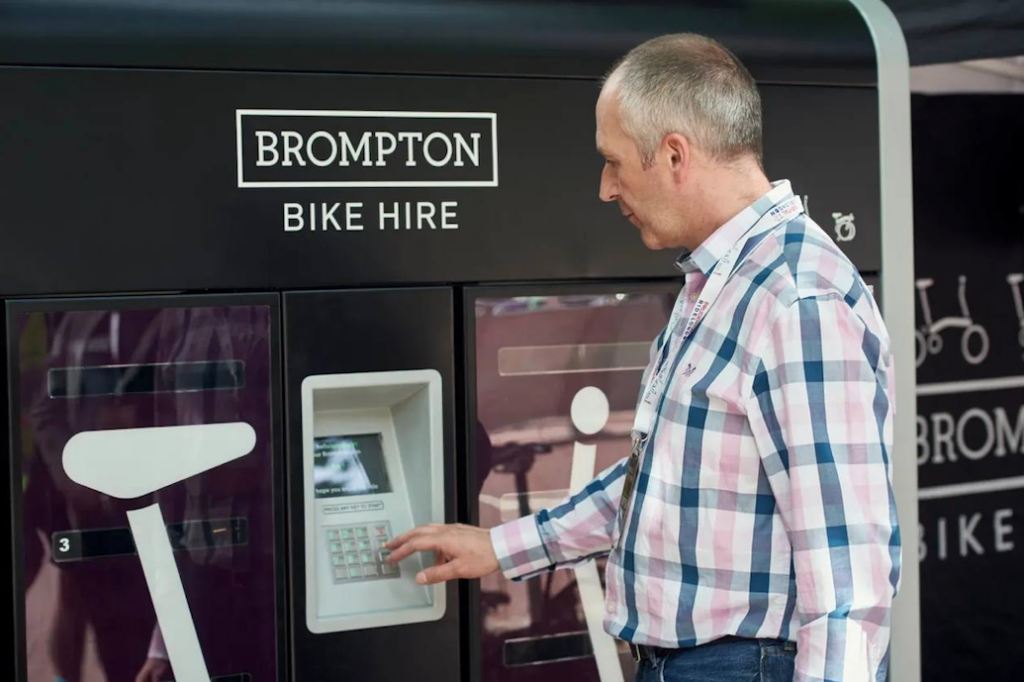
The easier it is for people to ride, the more people will. They copy the same model of lockers you had at school, but instead of storing books they store Brompton Bikes, making it more accessible for everyday citizens strolling through the city by foot to hire one. The Brompton Bike Hire also uses fewer resources because the bikes are shared among multiple people and used more often. This system has helped avoid an estimated 208 tons of carbon emissions by substituting bike journeys in place of car trips. In addition, they have a solar panel attached making these units completely self-contained. Today there are close to 80 docks across the UK where you hire your Brompton Bike for only £5 a day. Easy.
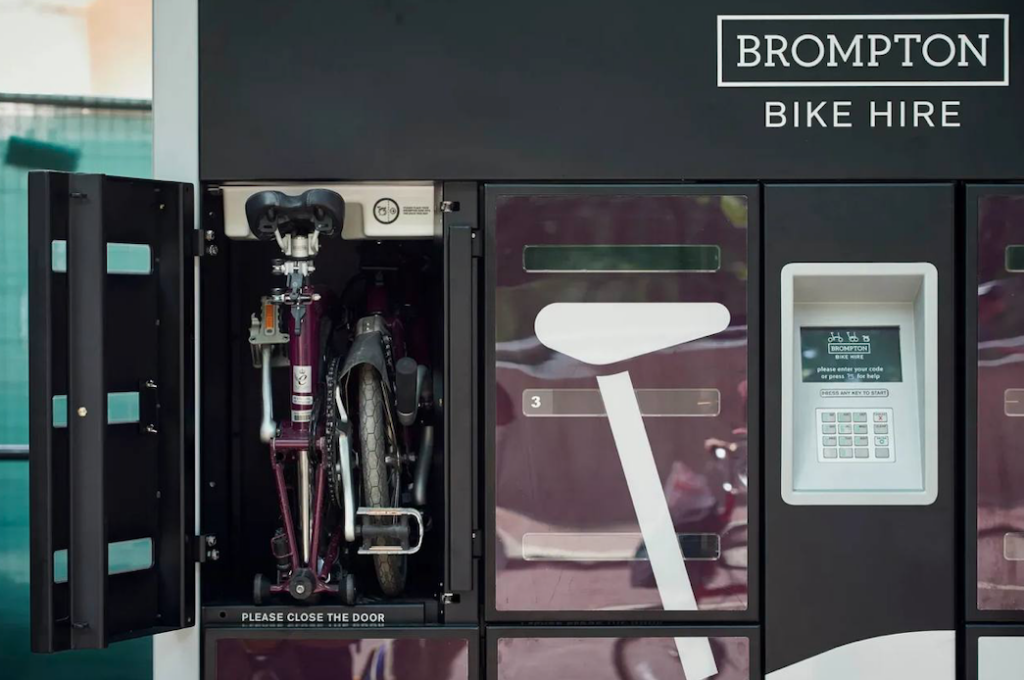
Similar Post
Another initiative aimed at creating a more eco-friendly community is the Brompton Electric bike. In 2019, transport accounted for 27% of the UK’s total carbon emissions, with road transport vehicles responsible for 91% of this pollution. The Brompton Electric bike addresses this issue by producing zero emissions. Additionally, it provides a practical solution for longer commutes and hilly journeys, appealing to customers seeking effortless travel options to work without relying on cars.
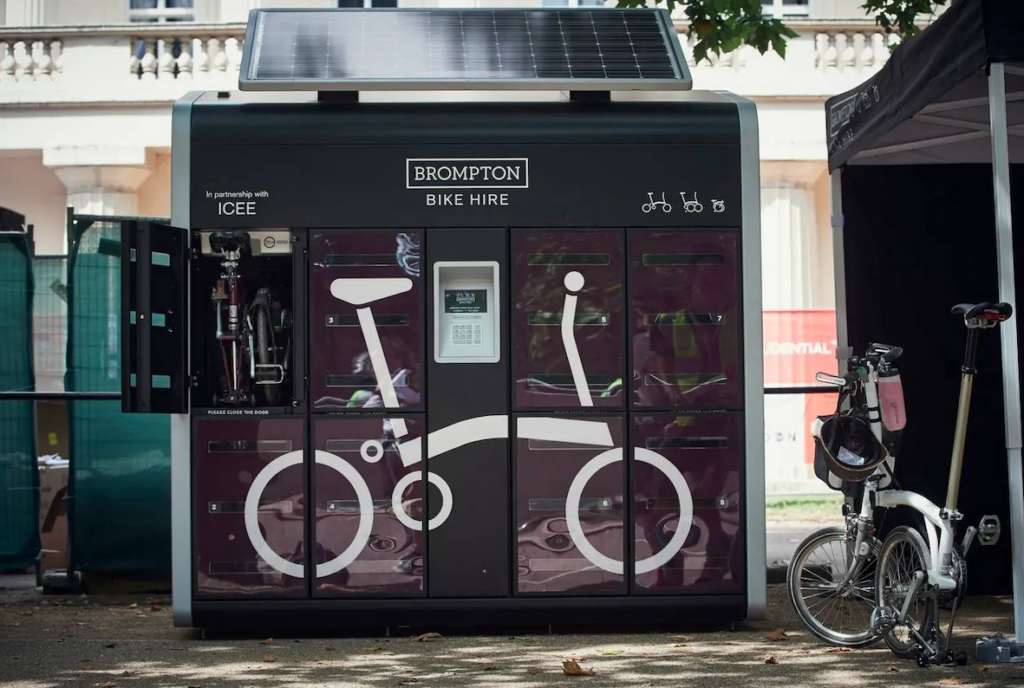
Brompton understood the importance of creating a bike which appeals to the masses, therefore they ensured that the bikes were not only functional but attractive to the clientele. They enhanced the design model by allowing the consumer personalize their own bikes by choosing the bike colour, handlebars, gear configurations and saddles. This also included new materials like Titanium and structural enhancements to make the bikes both lighter and stronger. All this catapulted the brand globally, with a presence in over 40 countries and a loyal customer base that spans continents.
Regarding its sustainability, the partnership has confirmed significant improvements in the product’s design, functionality, and sustainability. Brompton Bikes envisions itself reaching net zero by 2050, but through Seymour Powell’s constructive scheme, it seems they may get there even sooner.
